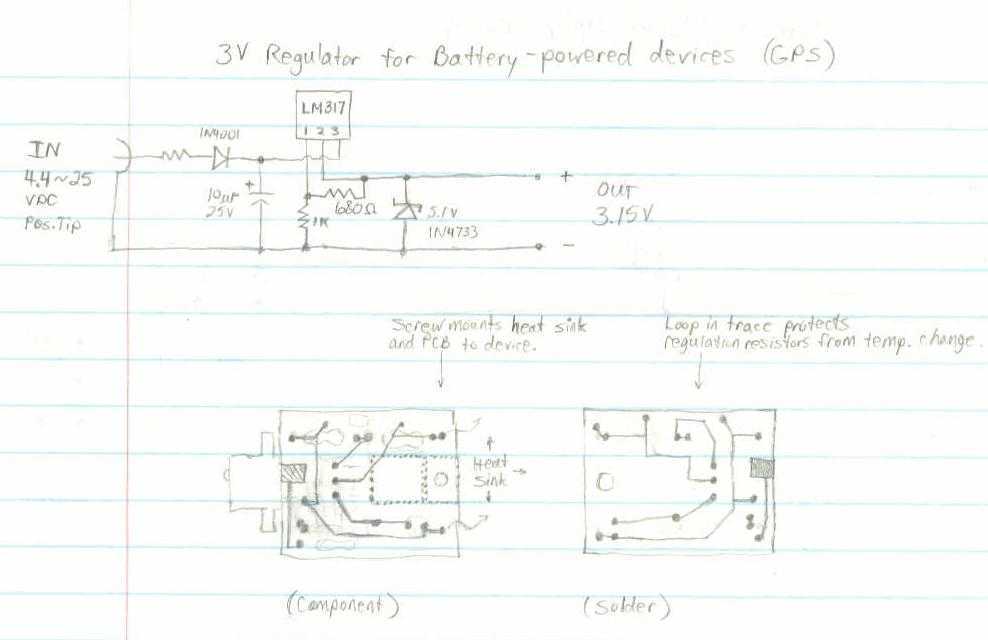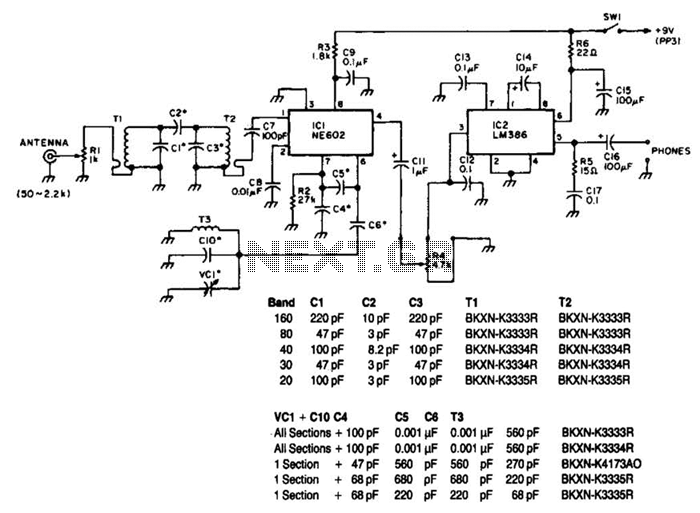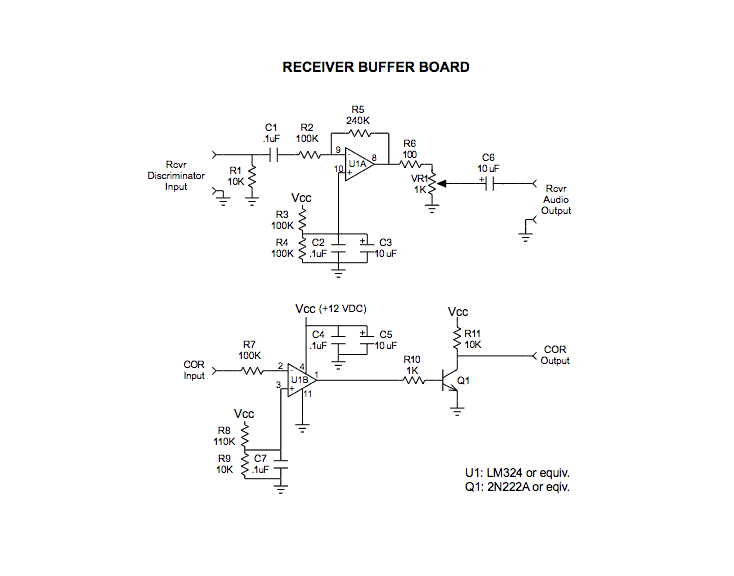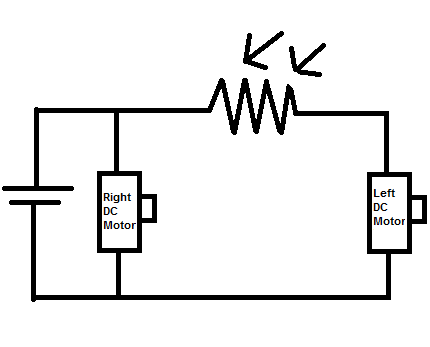
Vacuum Fluorescent Device Regenerative Receiver
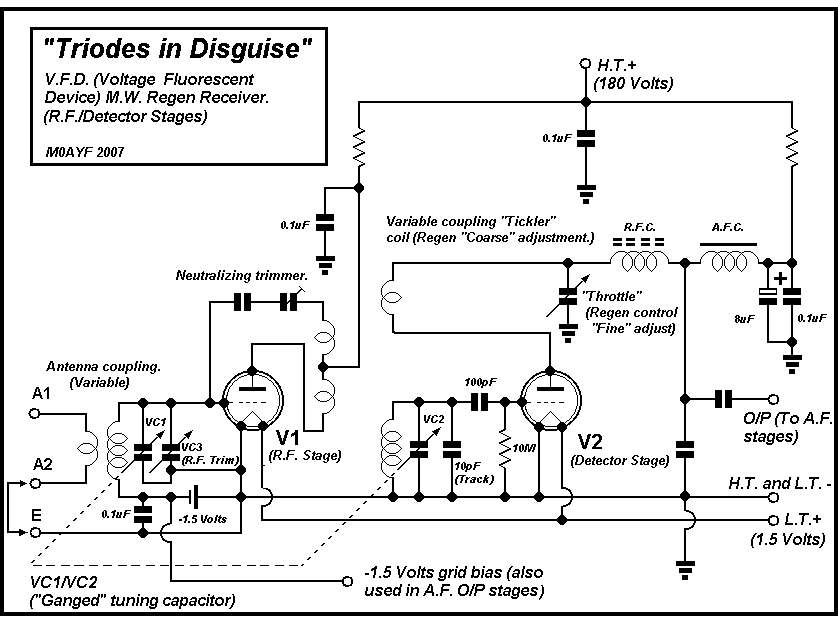
This project originated from a desire to experiment with traditional methods of radio construction that were popular approximately 70 years ago. The aim was to explore the performance that could be achieved using simple circuits that incorporate valves or vacuum tubes and low-budget design techniques that were prevalent in the 1930s. Specifically, there was an interest in utilizing "Spider" coils and a regenerative detector that employs a low-mu (low gain) triode as the active component. There is a significant amount of folklore surrounding regenerative receivers, with many claims of exceptional performance from these straightforward designs. Generally, these claims are well-founded; a well-constructed regenerative receiver of sound design will deliver satisfactory performance. Over the years, several regenerative receivers have been built for both broadcast and amateur radio reception using vacuum tubes and/or solid-state devices. It has been confirmed that they perform as advertised. However, most of the receivers constructed utilized modern components and construction techniques, making it intriguing to build a "retro" receiver using traditional construction methods and to compare its performance with that of newer designs. To adhere closely to the traditional construction methods and technologies available in the 1930s, it was determined that low-mu triodes would be used in various stages of the receiver. Although a small collection of 1930s triode valves/tubes was available, the decision was made to reserve these for a future retro project. Consequently, a suitable replacement for the low-mu triodes had to be identified. A physical examination of the internal structure of a vacuum fluorescent device (VFD) revealed that it contained all the essential electrodes found in a triode valve/tube. A basic triode valve consists of three electrodes: a heated cathode, a control grid, and an anode/plate. In a typical directly heated triode, the cathode is represented by a specially coated filament. When an electric current flows through this filament, it heats up and emits electrons, a process referred to as "directly heated" or "self-heated" cathode operation. A cut-away diagram of a directly heated triode valve, typical of those used in 1930s domestic broadcast receivers, illustrates this structure. A VFD is a display device commonly found in household appliances such as VCRs, bedside clocks, and microwave ovens. Although it may not be immediately apparent, the internal structure of a VFD closely resembles that of a simple directly heated triode valve, functioning as a sort of "triode in disguise." The primary distinction is that the VFD features a planar construction, contrasting with the coaxial design of typical valves/tubes. The VFDs utilized in this project contain a single 7-segment display within a glass envelope and physically resemble a small vacuum tube. The VFD includes a directly heated cathode (filament wires), a control grid, and at least one anode/plate coated with phosphor that emits light when struck by electrons. Most VFDs have multiple phosphor-coated anodes/plates, each with its own electrical connection, allowing for a multi-segment display. For instance, a numbers display typically consists of at least seven phosphor-coated anodes/plates, with additional ones possibly included for indicating signs and decimal points. The internal electrodes of the VFD device are illustrated in the accompanying diagram. The phosphor-coated anodes/plates have separate connections enabling individual segments to be turned on or off to generate different numbers.
The project involves constructing a regenerative receiver that utilizes a vacuum fluorescent display (VFD) as an alternative to traditional low-mu triodes. The regenerative receiver design employs a simple circuit architecture, incorporating a regenerative detector that amplifies radio signals. The "Spider" coil, known for its efficient inductance characteristics, is used to enhance the receiver's performance. The VFD serves as a functional substitute for the triode, effectively replicating the necessary electrode configuration while providing a modern twist to the retro design.
In terms of schematic representation, the regenerative receiver circuit includes the following components: a power supply that provides the necessary voltage to the VFD's filament and the anode; the Spider coil, which is connected to the input stage of the receiver; the VFD, where the control grid modulates the flow of electrons from the cathode to the anode; and output connections for audio signals that can be fed into a speaker or headphones. The VFD's phosphor-coated anodes are connected to a control circuit that enables the switching of different segments, allowing for visual feedback during operation.
The design emphasizes simplicity and accessibility, adhering to the principles of vintage radio construction while leveraging the functional attributes of modern display technology. The resulting receiver is expected to provide an engaging experience for both the builder and the user, showcasing the capabilities of regenerative receivers alongside the charm of retro electronics.This little project arose from a desire to experiment with some of the more "traditional" methods of radioconstruction which enjoyed popularity some 70 years ago. I wanted to find out for myself what kind of performance could be achieved using simple circuits incorporating Valves/Vacuum Tubes and low budget design techniques popular in the 1930`s.
In particular I was curious to try out "Spider" coils and a Regenerative Detector using a low-mu (low gain) triode as the active device. There is a great deal of "folklore" surrounding regenerative receivers with claims of exceptionally good performance from these simple designs.
For the most part these claims are well justified. Its true to say that a well constructed regen receiver of good design will give pleasing performance. Over the yearsa number of regen receivers have been constructed here at M0AYF for both broadcast and ham radio reception usingvacuum tubes and/or solid state devices.
Icanconfirm that they do indeed perform as advertised. But most of the receiversbuilt herehad taken advantage of using modern components and construction techniques so it was interesting to build the "retro" receiver using more traditional construction techniques and then to compare the performance to that of newer designs. In order to remain as faithful as possible to the traditional methods of construction and technology available in the 1930`s it was decided that low-mu (low gain) triodes would be used for the various stages of the receiver.
Though I have a small quantity of 1930`s triode valves/tubes in the M0AYF junk-box the decision was made to save these for a future "retro" project. So a suitableactive device to serve as a replacement for the low-mu triodes had to be found. Physical inspection of the internal construction of a VFD (Vacuum Fluorescent Device) revealed that it possessed all of the key electrodes found in a triode valve/tube.
A basic triode valve/tube consists of three electrodes, a heated cathode, a control grid and an anode/plate. The cathodeelectrode in a typical directly heated triode takes the form of a specially coated filament.
This coated filament is arranged such that when an electric current is passed through it the filament will heat up and "glow" causing electrons to be freely emitted. This is generally termeda "directly heated" or "self heated" cathode. Below is a cut-away diagram of a triode valve/tube which is of the directly heated type andtypical of those used in the 1930`s for domestic broadcast receivers.
A Vacuum Fluorescent Device (VFD) is a display device used extensively in domestic electrical goods such as VCR`s, bedside clocks and microwave ovens to name but a few. Though it may not be immediately obvious the internal construction of a VFD is very similar to that of a simple directly heated triode valve/tube, a sort of "Triode in Disguise".
The main difference is that the VFD isof a planar construction which is in contrast to the coaxial construction of the typical valve/tube shown in the diagram above. The VFD`s used in this project contain a single 7-segment display within a glass envelope and physically resemble a small valve/vacuum tube.
The VFD has a directly heated cathode (filament wires), a control grid and at least one anode/plate coated with a phosphor which emits light when struck by electrons. Most VFD`s have more than one phosphor coated anode/plate each with its own electrical connection to provide a multi segmented display.
For example a "numbers" display would typically have at least seven phosphor coated anodes/plates and possibly a few more to indicate the sign and decimal place. Theinternal electrodes of the the VFD device are shown in the diagram on the right. The phosphor coated anodes/plates have separate connections so that individual segments can be switched on or off to produce different numbers.
In the example VFD shown above the filament supply Voltage is ar 🔗 External reference
The project involves constructing a regenerative receiver that utilizes a vacuum fluorescent display (VFD) as an alternative to traditional low-mu triodes. The regenerative receiver design employs a simple circuit architecture, incorporating a regenerative detector that amplifies radio signals. The "Spider" coil, known for its efficient inductance characteristics, is used to enhance the receiver's performance. The VFD serves as a functional substitute for the triode, effectively replicating the necessary electrode configuration while providing a modern twist to the retro design.
In terms of schematic representation, the regenerative receiver circuit includes the following components: a power supply that provides the necessary voltage to the VFD's filament and the anode; the Spider coil, which is connected to the input stage of the receiver; the VFD, where the control grid modulates the flow of electrons from the cathode to the anode; and output connections for audio signals that can be fed into a speaker or headphones. The VFD's phosphor-coated anodes are connected to a control circuit that enables the switching of different segments, allowing for visual feedback during operation.
The design emphasizes simplicity and accessibility, adhering to the principles of vintage radio construction while leveraging the functional attributes of modern display technology. The resulting receiver is expected to provide an engaging experience for both the builder and the user, showcasing the capabilities of regenerative receivers alongside the charm of retro electronics.This little project arose from a desire to experiment with some of the more "traditional" methods of radioconstruction which enjoyed popularity some 70 years ago. I wanted to find out for myself what kind of performance could be achieved using simple circuits incorporating Valves/Vacuum Tubes and low budget design techniques popular in the 1930`s.
In particular I was curious to try out "Spider" coils and a Regenerative Detector using a low-mu (low gain) triode as the active device. There is a great deal of "folklore" surrounding regenerative receivers with claims of exceptionally good performance from these simple designs.
For the most part these claims are well justified. Its true to say that a well constructed regen receiver of good design will give pleasing performance. Over the yearsa number of regen receivers have been constructed here at M0AYF for both broadcast and ham radio reception usingvacuum tubes and/or solid state devices.
Icanconfirm that they do indeed perform as advertised. But most of the receiversbuilt herehad taken advantage of using modern components and construction techniques so it was interesting to build the "retro" receiver using more traditional construction techniques and then to compare the performance to that of newer designs. In order to remain as faithful as possible to the traditional methods of construction and technology available in the 1930`s it was decided that low-mu (low gain) triodes would be used for the various stages of the receiver.
Though I have a small quantity of 1930`s triode valves/tubes in the M0AYF junk-box the decision was made to save these for a future "retro" project. So a suitableactive device to serve as a replacement for the low-mu triodes had to be found. Physical inspection of the internal construction of a VFD (Vacuum Fluorescent Device) revealed that it possessed all of the key electrodes found in a triode valve/tube.
A basic triode valve/tube consists of three electrodes, a heated cathode, a control grid and an anode/plate. The cathodeelectrode in a typical directly heated triode takes the form of a specially coated filament.
This coated filament is arranged such that when an electric current is passed through it the filament will heat up and "glow" causing electrons to be freely emitted. This is generally termeda "directly heated" or "self heated" cathode. Below is a cut-away diagram of a triode valve/tube which is of the directly heated type andtypical of those used in the 1930`s for domestic broadcast receivers.
A Vacuum Fluorescent Device (VFD) is a display device used extensively in domestic electrical goods such as VCR`s, bedside clocks and microwave ovens to name but a few. Though it may not be immediately obvious the internal construction of a VFD is very similar to that of a simple directly heated triode valve/tube, a sort of "Triode in Disguise".
The main difference is that the VFD isof a planar construction which is in contrast to the coaxial construction of the typical valve/tube shown in the diagram above. The VFD`s used in this project contain a single 7-segment display within a glass envelope and physically resemble a small valve/vacuum tube.
The VFD has a directly heated cathode (filament wires), a control grid and at least one anode/plate coated with a phosphor which emits light when struck by electrons. Most VFD`s have more than one phosphor coated anode/plate each with its own electrical connection to provide a multi segmented display.
For example a "numbers" display would typically have at least seven phosphor coated anodes/plates and possibly a few more to indicate the sign and decimal place. Theinternal electrodes of the the VFD device are shown in the diagram on the right. The phosphor coated anodes/plates have separate connections so that individual segments can be switched on or off to produce different numbers.
In the example VFD shown above the filament supply Voltage is ar 🔗 External reference
